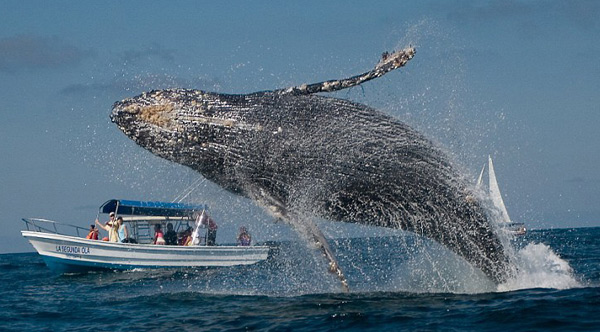
|  |  |  Travel & Outdoors Travel & Outdoors  
No Need for Binoculars: Tourists Get a Shock as Grey Whale Bursts from Ocean Just Yards from Their Boat
 dailymail.co.uk dailymail.co.uk
go to original
January 15, 2010


| | This giant specimen breaching between two boats in the Banderas Bay, off Mexico's Puerto Vallarta coast was photographed by Lea Wheeler and submitted to National Geographic. |  |
Leaping gracefully out of the water, this Humpback whale was photographed breaching close to fishing boats in Banderas Bay off the Mexican resort, Puerto Vallarta.

The whales, which can reach a length of 52 ft and weigh up to 36 tons, were once known as devil fish because of their fighting behaviour when hunted. The mammals are descended from the filter-feeding whales that came into being over 30 millions years ago.

The migration route of the Eastern Pacific, or California, grey whale is often described as the longest known mammal migration. Beginning in the Bering and Chukchi seas and ending in the warm-water lagoons of Mexico's Baja peninsula, their round trip journey moves them through 12,500 miles of coastline.

This journey begins each October as the northern ice pushes southward. Travelling both night and day, the gray whale averages approximately 80 miles per day. By mid-December to early January, the majority of the grey whales are usually found between Monterey and San Diego, where they are often seen from shore.

By late December to early January, the first of the gray whales begin to arrive the calving lagoons of Baja. These first whales to arrive are usually pregnant mothers that look for the protection of the lagoons to give birth to their calves, along with single females seeking out male companions in order to mate.

By mid-February to mid-March the bulk of the grey whales have arrived the lagoons. It is at this time that the lagoons are filled to capacity with nursing, calving and mating whales.

By late March or early April a number of greys enter Puget Sound and may be seen from Canada as far south as Everett, Washington near the mouth of the Snohomish River. |

 |
|  |



